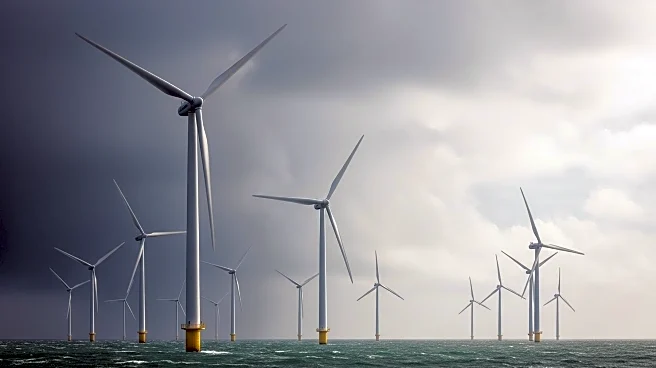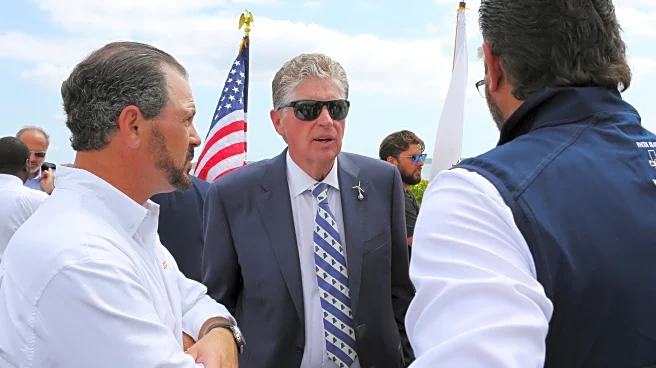What is the story about?
What's Happening?
The entertainment industry is increasingly leveraging storytelling to drive investments in climate-resilient infrastructure, aligning with Environmental, Social, and Governance (ESG) principles. The narrative of 'The Lost Bus' serves as a cultural catalyst, illustrating how stories can bridge the gap between public sentiment and tangible investments. This approach is being used to foster urgency around environmental challenges, such as wildfires and renewable energy transitions. Stakeholders are embedding climate resilience into both entertainment and infrastructure, unlocking new pathways to address disaster preparedness and renewable energy transitions. For example, the electrification of school buses in the U.S. is projected to generate significant health benefits by reducing pollution in vulnerable communities. Despite challenges like the bankruptcy of a major electric bus manufacturer, innovative projects continue to demonstrate the feasibility of ESG-aligned solutions.
Why It's Important?
The integration of storytelling into ESG investments is significant as it influences public policy and investment priorities. By creating visceral connections through narratives, audiences are compelled to demand systemic change, which directly impacts capital allocation. This approach not only mitigates climate risks but also creates markets for sustainable commodities, reinforcing the economic viability of ESG strategies. The entertainment industry’s role in shaping public sentiment is crucial for driving investments in renewable energy and disaster preparedness. As public awareness grows, investment portfolios are increasingly designed to prioritize both environmental impact and financial returns, reflecting a growing alignment between public sentiment and scalable solutions.
What's Next?
The path forward involves addressing challenges such as the fragility of supply chains in emerging sectors and disparities in adaptation spending. Governments and investors must prioritize standardized ESG metrics, AI-driven climate-risk modeling, and community-centric narratives to ensure equitable access to resilience-building resources. The fusion of storytelling and infrastructure investment represents a paradigm shift in addressing climate change, with stakeholders mobilizing public sentiment to drive ESG-aligned projects. As examples like electric buses, microgrids, and forest restoration demonstrate, the future of climate resilience lies in the stories we tell and the investments we make to turn those stories into reality.
Beyond the Headlines
The deeper implications of this development include the need for diversified supply chains and risk-mitigation strategies in nascent industries. The bankruptcy of Lion, a major electric bus manufacturer, highlights these challenges. Additionally, the uneven allocation of private-sector climate investments across sectors reveals gaps that require policy intervention. By leveraging narratives like 'The Lost Bus,' stakeholders can mobilize public sentiment to drive ESG-aligned projects, illustrating the power of storytelling in shaping investment trends and public policy.
AI Generated Content
Do you find this article useful?















